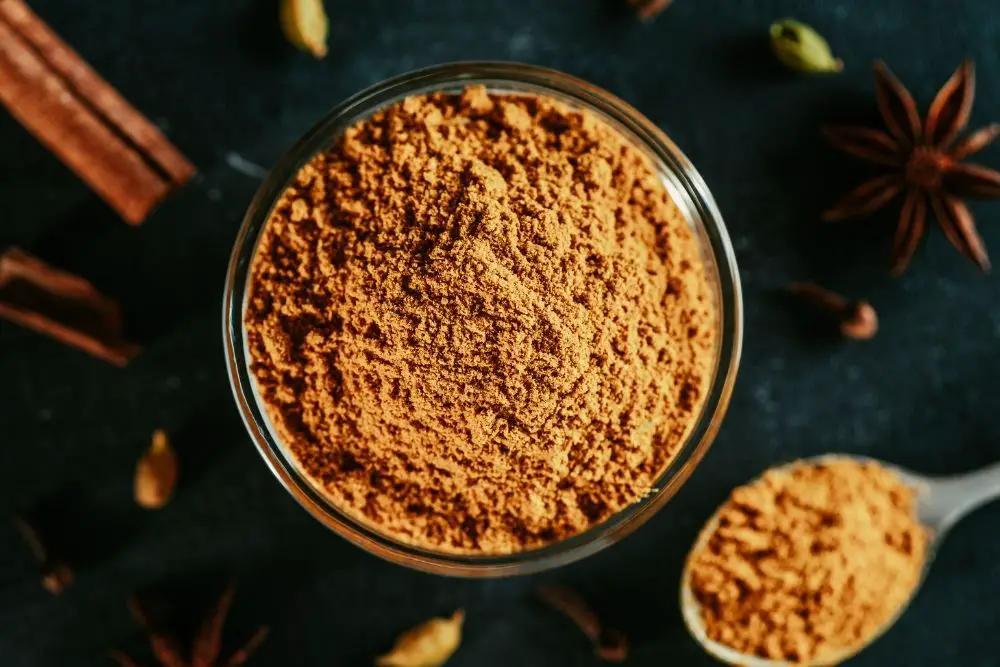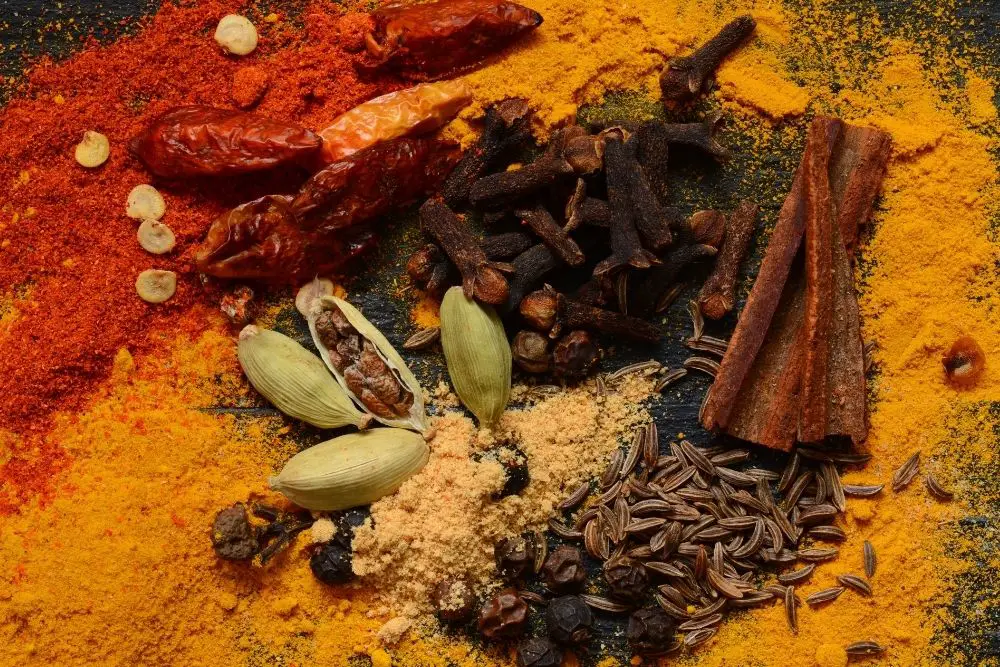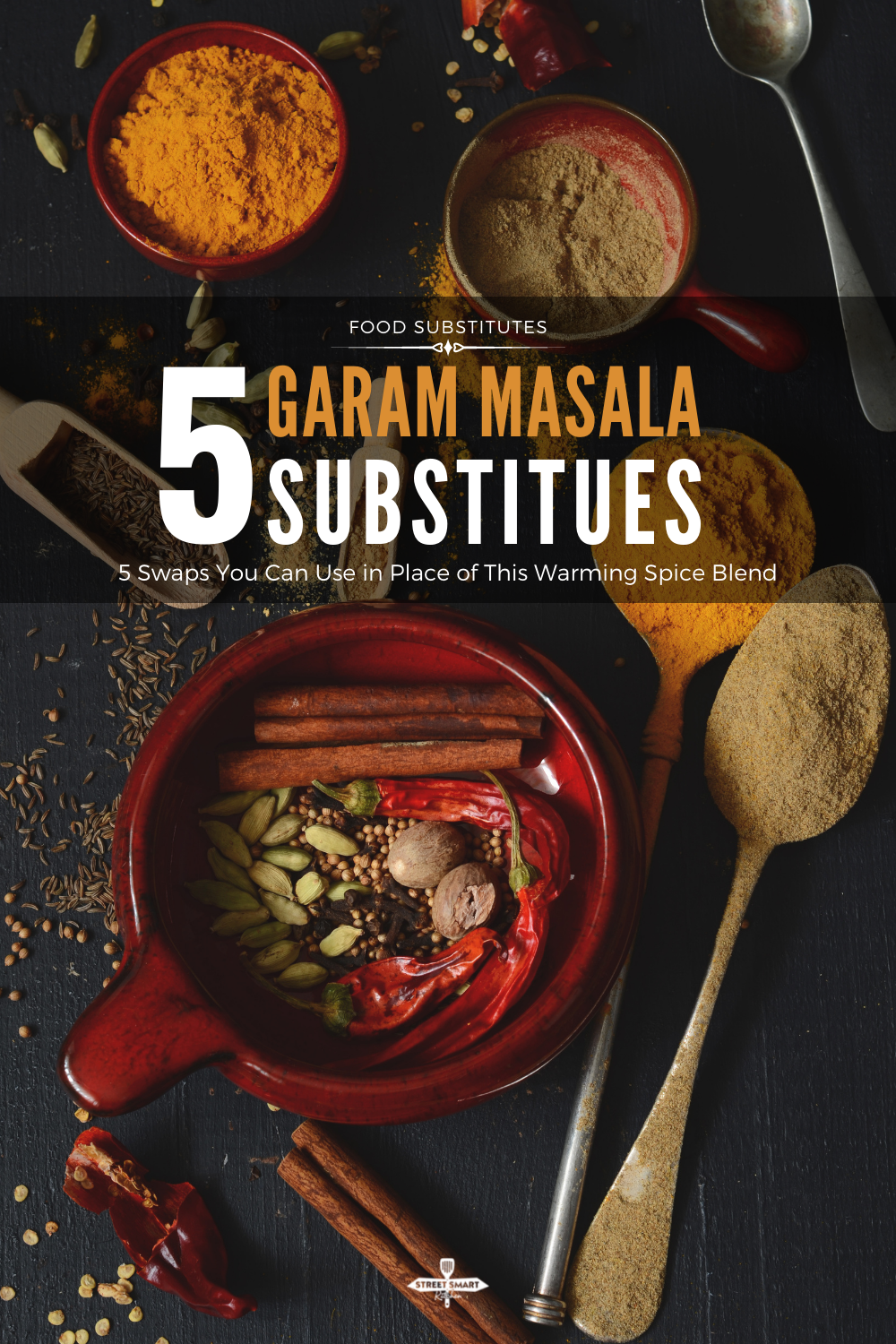5 Best Garam Masala Substitute
Find out what you can use as a garam masala substitute if you are out of this blend of warming spices to make an Indian dish taste authentic.

You’re here searching for a garam masala substitute, so I’m going to assume you’re about to whip up a delicious Indian sauce or dish, like butter chicken, chicken tikka masala, or a chickpea and potato curry. Yum! While this warming spice blend adds the authentic flavor to nearly all Indian dishes, there are substitutes you can use to achieve a similar flavor profile if you’re in a pinch.
What Is Garam Masala?
If this is your first time cooking with garam masala—or trying to find an equivalent replacement—it helps to know exactly what this aromatic Indian spice blend is.
Garam masala literally translates to warm spices in Hindi. The interesting thing about this blend is that it has no set recipe. However, specific warming spices will go into any given garam masala to achieve a deep, sweet, warming, pungent flavor profile. You’ll find all or most of the following spice mix in garam masala:
- Cinnamon
- Cumin seeds
- Black and green cardamom
- Coriander seeds
- Nutmeg
- Cloves
- Fennel
- Black peppercorns
- Indian bay leaves

Some variations may also include fenugreek, mustard seeds, mace, star anise, allspice, ginger, tamarind, and dried red chiles (which aren’t as common unless you’re in Southern India).
In India, the blend of spices you’ll find in garam masala changes depending on your region and what’s available locally. Garam masala recipes are also passed down through families, which means it’s unlikely for any two recipes to be completely identical. Garam masala can sometimes contain up to thirty or more different spices.
How to Cook with Garam Masala
Garam masala is typically added during and/or at the end of cooking to enhance the flavors of a dish. You only need a small amount since it has a sharp, pungent taste.
Can I Use Curry Powder Instead of Garam Masala?
The answer to this question is: substitute at your discretion.
Since these are two entirely different spice blends with different flavor profiles, be prepared for your dish to taste different than the intended flavor. It will also be a different color, as garam masala is a brownish color, and curry powder is yellow.
In terms of flavor, curry powder is typically mild or fiery (but not spicy), and savory, combining spices like turmeric, cumin, coriander, dry mustard, ginger, garlic, and/or cayenne pepper. It leaves out the sharper, sweeter, and slightly floral notes in garam masala, which come from the cardamom, cloves, cinnamon, and nutmeg.

While curry powder is not a direct substitute for garam masala because it’s missing those sweeter, warming elements, it can still do the trick in most Indian cuisine if you have nothing else in your spice cabinet. Another option is to combine curry powder with one or two of the warming spices found in garam masala, which we’ll discuss in more detail below. Curry powder and garam masala also pair well in the same recipe.
Also, Did you know that curry powder is not traditionally used in Indian cooking? It has British roots and was created by the English to bring Indian flavors to the UK.
Can I Use Chaat Masala Instead of Garam Masala?
Both chaat and garam masala use coriander and cumin but have very different flavor profiles.
Chaat masala is often described as “exciting,” with a zesty, tangy, sweet, sour, and sulfuric taste. It combines ingredients like dried mango powder, ginger, and sometimes fennel, pomegranate, sugar, or mint.
Another key ingredient in chaat masala that you’ll never find in garam masala is Himalayan black salt or kala namak. Black salt has a distinct, sulfuric taste that some compare to the flavor of eggs when used alone.
Traditionally, chaat masala is sprinkled on dishes such as fruit salads, fried foods, potato dishes, and regular salads; it is not used to heighten the flavors of savory dishes such as lentils, soup, stew, or curry during cooking. For this reason, chaat masala is not an ideal substitute for garam masala as it will drastically change your dish.
5 Best Garam Masala Substitute Options
1. DIY your own blend with ground spices
If you have any of the spices mentioned above, making your garam masala is easy. Remember, there are no strict measurements or exact recipes to follow for garam masala in Indian culinary culture. So, why not make a blend of your own creation?
One thing to note is that coriander or coriander seeds typically form the base of garam masala. This is because they balance out the pungency of the other spices by adding a hint of citrus. If you don’t have coriander on hand, you may find the remaining spices to be a little strong or unbalanced, but it’s not absolutely necessary.
Here is a super easy DIY garam masala spice blend with spices you can easily find at a grocery store:
- 1 part ground cumin
- ½ part ground cloves
- 1 ½ parts ground cardamom
- 1 part ground cinnamon
- 1 ½ parts ground coriander
- ½ part ground nutmeg
- 1 ½ parts ground black pepper
If you prefer whole spices such as cardamom pods and cinnamon sticks, use a coffee grinder to make freshly ground spices.

2. Allspice and cumin or allspice and coriander
Allspice contains cinnamon, nutmeg, cloves, and pepper, which are four of the spices in store-bought garam masala. Therefore, it makes a good base for homemade garam masala.
Add four parts cumin to one part allspice or four parts coriander to one part allspice (or both) to form a garam masala blend. If you have any leftovers, store them in an airtight container for six months.
3. Curry powder with cloves, cinnamon, cardamom, cumin, or coriander
Do you have curry powder on hand but only one or two of the key spices in garam masala? Go ahead and mix one part curry powder with ½ part cloves, one part cinnamon, 1 ½ parts cardamom, one part ground cumin, and/or 1 ½ parts coriander to incorporate a hint of garam masala’s flavors.
4. Cumin, coriander, cardamom, black pepper
Another combination that could work as an “emergency” garam masala substitute is one part cumin, one part coriander, one part black pepper, and one part cardamom.
5. Cinnamon, fenugreek, cloves, black pepper
As with the above, combining cinnamon, fenugreek, cloves, and black pepper will capture some of the essences of garam masala and help create a similar flavor profile in your dish.

The Takeaway
The best substitute would be to make a garam masala blend at home using cumin, cloves, cardamom, coriander, cinnamon, and black pepper.
If you don’t have those spices on hand but have curry powder, this wouldn’t be an exact substitute due to very different flavor profiles. However, curry powder generally goes well in most Indian dishes. If you have them on hand, you can also add any of the spices found in garam masala to curry powder and use that as a good substitute.
If you have any of the spices in your spice cupboard that are commonly found in garam masala, such as cumin, cloves, cardamom, cinnamon, coriander, fennel, fenugreek, nutmeg, or Indian bay leaves, you can try making your own garam masala. Refer to the first option (DIY garam masala) for suggested measurements to bring out some key garam masala flavors in your dishes.

About the Author
Sharon Chen is an Integrative Nutrition Health Coach and author of the Complete Sous Vide Cookbook. She believes food not only brings healing but also connection. As the creator of StreetSmart Kitchen, she aims to make meal prep easier than ever and help you find balance, ease, joy, and simplicity in the kitchen as you improve your well-being.


